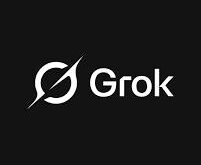Cloud migration has garnered much-needed attention from organizations considering the benefits it provides in terms of business continuity. The migration reached a peak in 2020, post the pandemic, as it became a vital component in keeping the businesses functioning with no halting of the operations. But the biggest downside for many organizations, especially small and medium sizes in adopting cloud migration was the cost factor of not just the migration but also the management of the cloud platform.
Now, the steady decrease in the cost of moving to a cloud platform has attracted organizations and enterprises of all sizes. Moving a step ahead of cloud migration, CIOs and technology heads across organizations are looking at automating the cloud as it has been proved that it can contribute to an increase in productivity and cost-saving due to the decrease in the number of errors. According to research by McKinsey, companies have achieved a 20-40% increase in the speed of releasing new capabilities to the market after adopting end-to-end cloud automation.
Yes, indeed cloud automation is of great help!
While in years, the popularity of cloud computing kept increasing, the associated task also got complicated due to the involvement of managing multiple environments and its associated workloads. It was seen that manual deployment and operation functions were often prone to errors that affected the availability. As the technologies are ever-evolving, the administrators are unable to shoulder the burden of configuring and deploying each and every component in real-time, while also identifying and implementing potential improvements. Cloud automation comes of great help and lays a proper roadmap to a successful transition of cloud infrastructure. As per a report by Deloitte, intelligent automation in the cloud, through streamlined development and deployment processes enables scaling in just 4-12 months, compared to the earlier 6-24 months period. Managing security and compliance, automated storage and backups, changing configurations and settings, and deploying code all of this and more is being achieved through cloud automation. Not to forget workloads in cloud environments are also being managed to maximise budget and resources.
Cloud Automation is widely divided into two types:
Support of operations for corporate Data Centers: IT administrators seek to leverage the same benefits of the public cloud such as self-service, policies, faster provisioning and automated operations in the corporate environment, in their on-premises private cloud or the hybrid cloud
Hosting websites and mobile applications at scale: Cloud automation improves network traffic speeds through SDN and load balancing utilities, while also serving web and mobile applications to millions of page hits per day.
A quick look at the benefits of cloud automation
Advanced Security: IT managers can build best security practices by automating workflows. This will not only help reduce developers and IT teams logging into mission-critical systems but also reduces the risk of human errors and malicious insiders compromising the account.
Error-free backup process: It is very important to frequently back up the systems to ensure data safety. Automated backups on the cloud improve an organisation’s residence to disaster.
Governance: Most of the time when systems are set up manually and administrators may not have a centralised way to control the system due to low visibility over what is actually running. With cloud automation, administrators have much more control over infrastructure running across organisations.
Cost Saving: Time vs money, cloud automation dynamically reduces the time it takes to provision infrastructure resources, eliminating errors and removing bottlenecks
What more? Usage of cloud orchestration along with Cloud automation
Cloud orchestration is about achieving objectives via cloud infrastructure by strategically organizing automated tasks. Cloud orchestration combines low-level tasks into processes and coordinates them throughout the entire infrastructure, often consisting of multiple locations or systems. While Cloud automation is all about automating the tasks and managing them smartly, cloud orchestration arranges and coordinates those defined tasks into a unified approach to accomplish intended goals. Although cloud automation can occur without cloud orchestration, a well-defined and thoughtful cloud deployment incorporates both techniques. The benefits of automating the cloud outweigh the initial adjustment period and hence keeping in mind the long-term benefits, organizations have been readily adopting automation of cloud management without any second thoughts.
 Newspatrolling.com News cum Content Syndication Portal Online
Newspatrolling.com News cum Content Syndication Portal Online





